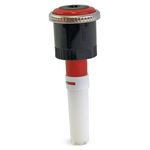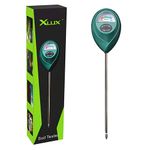
When most teenagers went to work at Dairy Queen for the summer, I decided to punch a time card at the local nursery. I had a basic knowledge of plants, thanks to my garden-savvy parents, but admittedly, I didn’t know the answer to every question customers threw my way. The one question that I dreaded being asked—and the one that was asked most often—went something like this: “Can you recommend a low-maintenance, flowering, evergreen plant?”
I understood this desire to “have it all” quite well; it was like me wanting a low-fat, low-calorie, great-tasting candy bar. But unlike the too-good-to-be-true treat, flowering evergreens do exist and come as close as possible to plant perfection. They have the year-round interest of conifers and the floral display of perennials. They’re great as foundation plants, not only because they’re evergreen but also because many have a short stature, so they won’t engulf a front entry. But they’re equally good mixed into any-size bed because they give plantings year-round staying power—otherwise known as the bones of the landscape. For all these reasons, I’ve come to understand why people want these evergreen gems and why I came to want them, too—even more than the world’s best-tasting, fat-free candy bar.
It’s sweet-smelling and supercompact
Name: ‘Somerset’ daphne (Daphne × burkwoodii ‘Somerset’)

If anyone claims to love daphnes for any reason other than their wonderfully fragrant flowers, then he or she would be lying. The smell is somewhere between a root-beer soda and baby powder, putting a smile on the face of anyone lucky enough to sniff them. An added bonus is their compact evergreen foliage (in cool zones, plants may only be semievergreen). Some daphnes have a bad reputation for being finicky, but ‘Somerset’ is one of the hardiest cultivars.
USDA Hardiness Zones: 5–8
Conditions: Partial shade; moist, well-drained soil
Size: 3 to 5 feet wide and 3 to 5 feet tall
Unusual color for a rhodie
Name: ‘Capistrano’ rhododendron (Rhododendron ‘Capistrano’)

In the world of rhododendrons, yellow blossoms are a rarity. Although there have been some new yellow introductions in the past few years, ‘Capistrano’ is still the best—hands down. It is remarkably resistant to the pests and diseases that typically plague this genus. Best of all, the dark leaves of ‘Capistrano’ seem to have a supernatural ability to avoid winter burn, and it has a prolific bloom display in midsummer.
Zones: 5–8
Conditions: Partial shade; moist, acidic, well-drained soil
Size: 5 to 6 feet wide and 4 to 5 feet tall
Durability sets this gem apart
Name: Evergreen abelia (Abelia floribunda)

Evergreen abelia is deer resistant and drought tolerant, puts up with pollution, and thrives in windy or sloped sites. Its dark green leaves are so glossy that you’ll think they’ve been coated with polyurethane. And just when it doesn’t seem like this shrub could get any better, it puts on an impressive flower display. The early-summer panicles of hot pink blossoms cover evergreen abelia, attracting hummingbirds and butterflies from two towns away.
Zones: 8–11
Conditions: Full sun to partial shade; fertile, well-drained soil
Size: 12 feet wide and 10 feet tall
Cool leaves, bold blossoms, and bountiful fruit to boot
Name: ‘Charity’ Oregon grape (Mahonia × media ‘Charity’)

Although mahonias are a classic evergreen shrub, this cultivar tops all others. The floral display that ‘Charity’ boasts from late winter to early spring is tremendous. Its 10-inch-long racemes of sunshine yellow flowers are densely clustered and larger than other mahonias. The flower plumes are held upright, splaying out from the top of this evergreen treasure. Its hollylike leaves maintain their lovely, matte green color throughout the year and appear along the stems in whorls. Waxy purple fruit appear late in the season. ‘Charity’ mahonia is the plant that every gardener should have to chase the winter blues away.
Zones: 7–9
Conditions: Partial to full shade; well-drained, slightly acidic soil
Size: 7 to 10 feet wide and 10 to 15 feet tall
Short in stature, big on impact
Name: ‘Cavatine’ Japanese pieris (Pieris japonica ‘Cavatine’)

This little shrub packs a serious punch. Its dense, dark green foliage forms a tight, compact mound. In early spring, ‘Cavatine’ is covered in bell-like white flowers, making the shrub look like a fluffy white snowball. Because it stays small, this Japanese pieris is sometimes mistaken for a unique, new perennial. Best of all, deer avoid it.
Zones: 5–9
Conditions: Partial shade; moist, well-drained soil
Size: 3 feet wide and 2 feet tall
This one thrives where others barely survive
Name: Laurustinus (Viburnum tinus)

The term “tough as nails” is thrown around a lot in plant-catalog descriptions, but in the case of this plant, it’s true. Laurustinus is a drought-tolerant shrub that thrives in poor soils and under extreme conditions (for example, in coastal areas or roadside plantings). Its glossy leaves are the perfect backdrop for large, fragrant white flower clusters. In late fall, laurustinus produces blue fruit, much to the delight of the local wildlife. This particular viburnum is great for screening and will tolerate heavy clay soils. Whatever you throw at this plant, it will take.
Zones: 8–10
Conditions: Full sun to partial shade; moist, well-drained soil
Size: 10 feet wide and 10 feet tall
A better shape for an eastern native
Name: ‘Sarah’ mountain laurel (Kalmia latifolia ‘Sarah’)

Mountain laurels can be a little hard to work with because of their loose, sprawling habit. But that isn’t a problem with the densely rounded shape of ‘Sarah’. The glossy green leaves of this cultivar resist outbreaks of rust more readily than those of other members of this genus. The buds of ‘Sarah’, which appear in late spring, are a deep scarlet, opening to a pinkish red.
Zones: 5–8
Conditions: Partial to full shade; rich, moist soil
Size: 6 feet wide and 6 feet tall
For this azalea, frigid temps are not a problem
Name: ‘Bixby’ azalea (Rhododendron ‘Bixby’)

I know what you’re going to say: Evergreen azaleas get beat up in cool zones and always end up looking awful by spring. That’s true of many cultivars, but ‘Bixby’ is the exception. Developed by a Massachusetts nursery located in Zone 5, this cultivar has proven reliable in severe cold. Its dense, low-growing habit is perfect for a foundation planting or tight space, while its bright red flowers stand out from afar. The American Rhododendron Society has given ‘Bixby’ the title of “Proven Performer,” a label that is well deserved.
Zones: 5–9
Conditions: Full sun to partial shade; well-drained soil
Size: 4 feet wide and 2 feet tall
Brilliant color gives this mini-mound an edge
Name: ‘Firefly’ heather (Calluna vulgaris ‘Firefly’)

This is not your typical evergreen because it’s usually not green at all. The scaly foliage of ‘Firefly’ is a unique terra-cotta color for most of the year and turns a brilliant brick red in cool temperatures; soft mauve flowers appear in fall (inset). The best attribute of heathers is their ability to thrive in the toughest of conditions. (They originated on the European moorlands, where strong winds and poor soil prevail.) Lean, sharply drained soils are not a problem, so ‘Firefly’ is an ideal roadside plant.
Zones: 4–7
Conditions: Full sun; well-drained soil
Size: 18 to 20 inches wide and 18 to 20 inches tall
There’s nothing that this shrub is lacking
Name: ‘Girard’s Rainbow’ leucothoe (Leucothoe fontanesiana ‘Girard’s Rainbow’)

‘Girard’s Rainbow’ leucothoe is one of the most underappreciated shrubs around. It has lovely, variegated evergreen foliage, with new growth emerging pink or bronze-orange—a detail that sets it apart from other cultivars. If this colorful display weren’t enough, long chains of fragrant, lily-of-the-valley–like flowers appear from midspring to early summer; the blooms are excellent as cut flowers. Just when you think things couldn’t get any better, the foliage flushes purple in fall. And although you’ll love this four-season wonder shrub, deer will not.
Zones: 5–8
Conditions: Partial to full shade; moist, well-drained soil
Size: 3 to 6 feet wide and 3 to 6 feet tall
Let size determine placement
The dimensions of your garden will help you figure out where to plant your flowering evergreens. You should give them a spot where they garner attention but don’t overshadow the rest of the cast.
Evergreen key
1 – Dwarf
2 – Medium-size
3 – Big
Small bed
(Less than 8 feet long and 8 feet wide)

A couple of medium-size evergreens help balance the two sides of a small garden; think of them as bookends holding the contents in between in place. Sneak in a dwarf evergreen at the front to add another level of interest.
Medium-size bed
(Approximately 12 feet long and 12 feet wide)

A medium-size evergreen on a corner of the bed creates a focal point while balancing out the deciduous tree on the opposite end. Placing it in the middle would be a mistake because it would stick out like a sore thumb. Disperse an odd number of dwarf evergreens throughout the rest of the bed not only to add “bones” to the planting but also to help hide the concrete foundation.
Large bed
(More than 15 feet long and 15 feet wide)

Big evergreens create the perfect screen for the back of a large garden. They also add structure and order to an area that can become messy and overgrown. Using medium-size and dwarf evergreens throughout the rest of the bed creates rhythm and helps add interest to all levels.
Associate editor Danielle Sherry gave up a promising career as an ice-cream scooper to pursue her passion for gardening.
Illustrations: Martha Garstang Hill
The following mail-order plant sellers offer the widest selection of the flowering evergreen shrubs featured:
- Arrowhead Alpines, Fowlerville, Mich.; 517-223-3581; www.arrowheadalpines.com
- Digging Dog Nursery, Albion, Calif.; 707-937-1130; www.diggingdog.com
- Gossler Farms Nursery, Springfield, Ore.; 541-746-3922; www.gosslerfarms.com
- Wavecrest Nursery, Fennville, Mich.; 888-869-4159; www.wavecrestnursery.com
- Whitney Gardens & Nursery, Brinnon, Wash.; 800-952-2404; www.whitneygardens.com
Fine Gardening Recommended Products

Nelson Multi-Pattern Stationary Sprinkler

Hunter Industries MP-1000-90 Hunter Nozzle

XLUX Soil Moisture Meter


















Comments
Log in or create an account to post a comment.
Sign up Log in